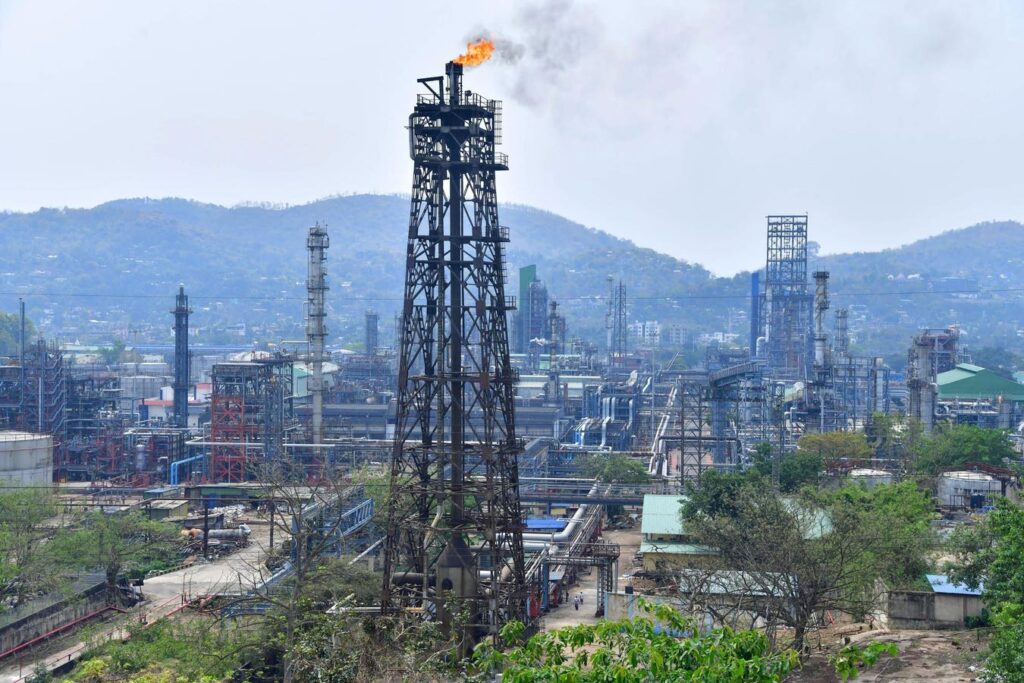Following Russia’s invasion of Ukraine in 2022, India emerged as a major buyer of Russian oil that was widely and rapidly sanctioned by the West. However, all that may be about to change, courtesy of a fresh wave of U.S. sanctions on Russia and India’s own scramble to find alternatives.
Such a shift is unlikely to be quite as simple or swift. India’s imports from Russia currently make up for a remarkable 40% of its total oil purchases on the global market, up fourfold from around 10% in 2021 – the year before hostilities began in Ukraine.
A noticeable jump in the flow of Russian oil to India happened in the second half of 2022. That’s when the U.S. and its allies slapped a price cap of around $60 per barrel for cargoes of Russian crude to access Western services needed for shipping, including insurance and tankers.
While the idea was to limit both Russian crude volumes on the global market as well as earnings from the sale of oil, India headed the pack of buyers that took advantage of the bind Moscow found itself in.
Gradually, a monthly oil trading partnership between Delhi and Moscow worth nearly $3 billion or 1.85 to 1.95 million barrels per day took shape, according to the Centre for Research on Energy and Clean Air (CREA).
Much of the oil was delivered via fleets of dark or ‘shadow’ tankers, i.e. tankers with unclear ownership structures created through various entities that make it difficult to pin down who actually owns or controls them, as well as compel them to follow Western sanctions.
Last year, CREA noted that: “81% of the total value of Russian seaborne crude oil was transported by ‘shadow’ tankers, while tankers owned or insured in countries implementing the price cap accounted for 19%.
“Russia’s reliance on tankers that are owned or insured in G7 countries has fallen due to the growth of ‘shadow’ tankers. This subsequently impacts the coalition’s leverage to lower the price cap and hit Russia’s oil export revenues.”
New Wave Of U.S. Sanctions
But on January 10, the U.S. announced a fresh wave of sanctions to target such tankers carrying Russian oil, along with maritime insurance providers based in the country.
In a statement, the U.S. Treasury said it was imposing further sanctions on Russian oil and gas exploration and production firms Gazprom Neft and Surgutneftegas, networks that trade Russian oil and 183 vessels that may have shipped such cargoes.
Nearly 40% of the vessels sanctioned by U.S. have transported Russian oil to India in the past, according to industry research outfits Lloyds List Intelligence and Kpler.
The development has sent India’s energy policymakers on a hunt for more alternatives. The country consumed north of 5 million bpd in 2024 and imported nearly 90% of the volume, according to the International Energy Agency.
Sources suggest Prime Minister Narendra Modi’s administration has already reached out to exporting nations in the Middle East it currently enjoys good relations with and already imports from. They include the United Arab Emirates, Saudi Arabia, Kuwait and Oman.
A Tad Less Russian Oil
Delhi has also had some reprieve in the sense that the tankers sanctioned by the U.S. can still offload their cargoes on or by March 12. Furthermore, anecdotal evidence and data also indicate that India was already looking to diversify its supply pool with the discount on Russian crude no longer what it used to be in 2022, and in anticipation of further U.S. action, before Washington announced the latest measures.
On Friday, a Reuters report collating industry data noted that the Organization of the Petroleum Exporting Countries’ share of India’s annual oil imports rose for the first time in nine years to nearly 51.5% last year, up from 49.6% in 2023.
However, Russia’s share remained steady at around 36%, with the annualized growth in India’s volume being serviced by oil from elsewhere. Further clarity on what Delhi may do next may be forthcoming in February at the India Energy Week – the country’s annual showcase of its position as the world’s second-largest crude importer and a major center of energy demand.
Last year, India’s Minister of Petroleum and Natural Gas Hardeep Singh Puri said the government was expanding its pool of crude suppliers from 27 countries to 39 countries to ensure security of supply.
“The U.S. remains a key energy trading partner. More oil is coming onstream from Brazil and Guyana, and yes, we will continue to buy from Russia,” he added.
Just how much Russian oil will reach India, and how, remains to be seen.
Read the full article here


